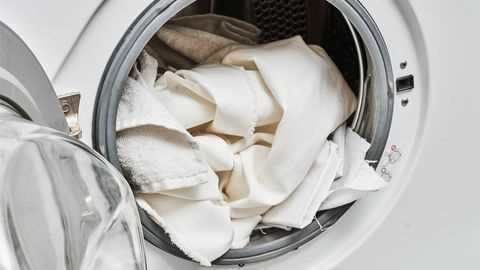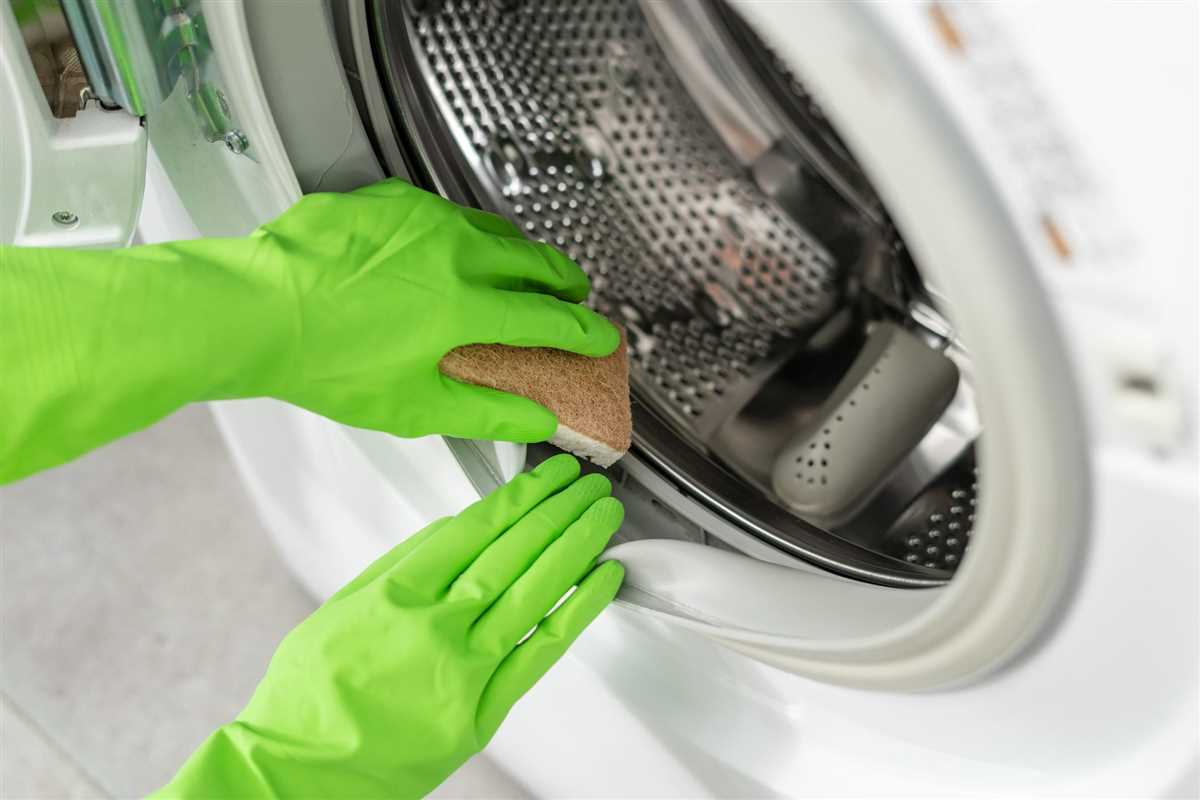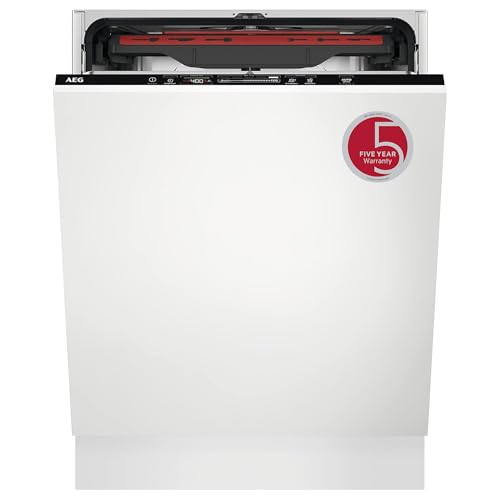




Have you ever noticed mysterious black bits on your clothes after washing them? Finding black specks on clean laundry can be frustrating and puzzling. These tiny particles can be difficult to remove and can even transfer onto other items in your laundry load. In this article, we will explore the various causes of black bits in the washing machine and provide helpful solutions to keep your clothes clean and fresh.
One common cause of black bits in the washing machine is the accumulation of dirt, lint, and other debris that can build up over time. This buildup can occur in various parts of the machine, such as the drum, detergent dispenser, or pump filter. When the laundry is agitated during the wash cycle, these particles can be dislodged and end up on your clothes.
Another possible cause of black bits in the washing machine is the growth of mold and mildew. These fungi thrive in warm and moist environments, which can be found inside the washing machine. If the machine is not properly cleaned and maintained, mold and mildew can begin to grow and release tiny black spores that can contaminate your laundry.
To prevent black bits in the washing machine and ensure your clothes stay clean and fresh, there are several steps you can take. Regularly cleaning the machine, including the drum, detergent dispenser, and pump filter, can help remove any accumulated dirt and debris. Additionally, running a hot water cycle with bleach or vinegar can help kill any mold or mildew that may be present.
By following these tips and staying proactive in maintaining your washing machine, you can effectively eliminate black bits from appearing on your clothes and keep your laundry looking its best.
Remember, a clean washing machine is the key to clean clothes!
What Causes Black Bits in the Washing Machine

Black bits in the washing machine, also known as black specks or flakes, can be quite frustrating. Nobody wants to find bits of dirt or residue on their clean clothes. These black bits can come from various sources. Let’s explore some common causes:
1. Dirty or Old Tub
If your washing machine has a dirty or old tub, it may cause black bits to appear on your clothes. Over time, dirt, grime, and detergent residue can build up inside the tub, leading to the formation of particles that can break off during the wash cycle.
2. Clogged or Moldy Drain Hose
A clogged or moldy drain hose can also be a culprit behind black bits in the washing machine. If the drain hose is clogged with lint, debris, or mold, it can release black particles into the wash water, which can then stick to your clothes.
3. Worn Out Bearings or Seals
When the bearings or seals in your washing machine start to wear out, they can produce black bits. These bits can mix with the wash water and end up on your clothes.
4. Low-Quality Detergent
Using low-quality detergent that doesn’t dissolve properly can leave behind residue that may appear as black specks on your clothes. It’s important to use high-quality detergent and follow the manufacturer’s instructions for the correct amount to use.
5. Fabrics Shedding
Some fabrics, especially new ones or those made from synthetic materials, have a tendency to shed fibers during washing. These loose fibers can appear as black specks on your clothes.
6. Hard Water Deposits

If you have hard water, mineral deposits can accumulate in your washing machine over time. These deposits can break loose during the wash cycle and appear as black bits on your clothes.
Knowing the possible causes of black bits in your washing machine can help you address the issue effectively. Regular cleaning and maintenance of your machine, using high-quality detergent, and keeping an eye on potential problems can help keep your clothes clean and free from unwanted specks.
Overloading the Washing Machine
One common cause of black bits in the washing machine is overloading. It can be tempting to stuff your washing machine full in order to get more laundry washed at once, but doing so can lead to problems.
Effects of Overloading
When you overload the washing machine, you put excessive strain on the drum and motor, which can cause them to malfunction or wear out faster. This can lead to poor washing results and longer washing cycles.
Potential Damage
Overloading the washing machine can also result in clothes not being washed properly. The extra items in the machine may prevent the water and detergent from circulating adequately, resulting in unclean clothes with traces of dirt and lint.
Solutions and Tips
To avoid overloading the washing machine, follow these tips:
- Check the manufacturer’s instructions for the maximum load capacity of your washing machine. Stick to this limit to ensure optimal washing performance.
- Separate your laundry into smaller loads. This may require doing multiple loads, but it will help prevent overloading and ensure thorough cleaning of your clothes.
- Properly distribute your laundry in the machine. Make sure the clothes are loosely packed and evenly distributed to allow proper water and detergent flow.
- Avoid cramming large or bulky items into the machine. These can take up a lot of space and prevent other items from being cleaned effectively.
Conclusion
Overloading the washing machine may seem like a time-saving option, but it can lead to black bits in your clothes and damage to your machine. By following the tips mentioned above, you can ensure optimal washing results and prolong the lifespan of your washing machine.
Accumulation of Detergent Residue

One possible cause of black bits in the washing machine is the accumulation of detergent residue. When laundry detergent is not properly rinsed off during the washing cycle, it can create a sticky residue that accumulates over time. This residue can then trap dirt, lint, and other particles, leading to the formation of black bits in the machine.
To prevent the accumulation of detergent residue, follow these tips:
- Use the right amount of detergent: Using too much detergent can make it difficult for the machine to rinse it off completely. Follow the manufacturer’s guidelines and use the recommended amount of detergent for your load size.
- Choose a high-quality detergent: Low-quality detergents may contain more fillers and additives, which can contribute to residue buildup. Invest in a good-quality detergent that rinses off easily.
- Use the correct water temperature: Some detergents require specific water temperatures to dissolve properly. Make sure you are using the appropriate water temperature to ensure proper detergent dissolution and rinsing.
- Check the detergent dispenser and drum: Regularly clean the detergent dispenser and drum to remove any buildup or residue. Refer to your machine’s instruction manual for the proper cleaning procedure.
If you notice black bits in your washing machine despite following these tips, it may be necessary to perform a deeper cleaning of the machine. This can be done by running an empty cycle with hot water and a cup of white vinegar or using a washing machine cleaner specifically designed to remove buildup and residue.
By taking these steps to prevent the accumulation of detergent residue, you can keep your washing machine and clothes clean and free from black bits. Regular maintenance and proper detergent usage are key in ensuring a well-functioning and efficient washing machine.
Mold and Mildew Growth
Mold and mildew growth in the washing machine can be a common issue, especially in humid climates or if the machine is not properly maintained. Here are some tips to help prevent and address mold and mildew growth in your washing machine:
Causes of Mold and Mildew Growth
- Humidity: High humidity levels provide an ideal environment for mold and mildew growth.
- Moisture: Excess water or dampness in the machine can contribute to mold and mildew growth.
- Dirt and Detergent Residue: If the washing machine is not cleaned regularly, dirt and detergent residue can accumulate and promote mold growth.
Preventing Mold and Mildew Growth
To prevent mold and mildew growth in your washing machine, follow these tips:
- Leave the door or lid of the machine open after each use to allow air circulation and prevent moisture buildup.
- Wipe down the rubber door gasket, detergent dispenser, and other areas prone to moisture regularly.
- Run a monthly cleaning cycle with bleach or a washing machine cleaner to remove any mold or mildew buildup.
- Avoid using too much detergent, as residue can contribute to mold growth. Follow the manufacturer’s instructions for detergent usage.
Addressing Mold and Mildew Growth

If you notice mold or mildew growing in your washing machine, take the following steps:
- Wear gloves and a mask to protect yourself from mold spores.
- Remove any visible mold or mildew using a bleach solution or a specialized cleaner designed for mold removal.
- Run a cleaning cycle with bleach or a washing machine cleaner to kill any remaining mold or mildew.
- Consider replacing the rubber door gasket if it is severely contaminated with mold.
By following these tips, you can prevent and address mold and mildew growth in your washing machine, ensuring that your clothes come out clean and fresh every time.
Build-up of Lint and Fibers
Lint and fibers can accumulate in your washing machine over time, leading to the formation of black bits that are transferred onto your clothes during the wash. These black bits can be frustrating and make your clothes appear dirty, even after washing them.
Causes:
- Excessive lint: If you regularly wash clothes that produce a lot of lint, such as towels or bedding, this can lead to a build-up of lint in your washing machine.
- Old or damaged lint traps: Lint traps are designed to catch lint and fibers before they can enter the drain pump or drain pipe. If your lint traps are old or damaged, they may not be effectively catching all the lint, allowing it to build up in the machine.
- Using too much detergent: Excess detergent can contribute to the accumulation of lint and fibers, as it can trap them in the machine instead of rinsing them away.
Solutions:
- Regularly clean the lint traps: Check your washing machine’s lint traps and clean them regularly to remove any built-up lint and fibers. If the lint traps are damaged, replace them.
- Use a laundry bag: If you wash clothes that produce a lot of lint, consider using a laundry bag or mesh laundry ball to contain the lint and prevent it from accumulating in the machine.
- Reduce the amount of detergent: Use the recommended amount of detergent for your load size to prevent excess detergent from trapping lint and fibers.
- Run a cleaning cycle: Periodically run a cleaning cycle with hot water and vinegar to remove any built-up lint and fibers from the machine.
- Deep clean the machine: If the build-up of lint and fibers is severe, you may need to deep clean the machine by removing the agitator or drum and manually cleaning the affected areas.
By following these tips, you can prevent the build-up of lint and fibers in your washing machine, ensuring that your clothes come out clean and fresh without any black bits.
Problems with the Water Supply
If you notice black bits in your washing machine, one possible cause could be problems with the water supply. Here are some common water supply issues that can result in black bits in your washing machine:
- Hard water: Hard water contains a high concentration of minerals such as calcium and magnesium. When the water is heated during the washing process, these minerals can accumulate and form black bits that end up on your clothes. Consider using a water softener or descaler to reduce the hardness of your water.
- Sediment: If your water supply contains sediment or particles, they can get trapped in your washing machine and cause black bits to appear. Installing a sediment filter on your water supply line can help remove these particles and prevent them from entering your washing machine.
- Old or corroded pipes: Over time, old or corroded pipes can release sediment into the water supply, which can then end up in your washing machine. If you suspect that your pipes are causing the issue, it may be necessary to replace them to prevent further contamination of your water supply.
If you experience black bits in your washing machine, it’s important to identify and address the underlying cause to prevent further damage to your clothes and ensure that your laundry remains clean and fresh. Make sure to consult a professional if you’re unsure how to fix the issue or if it persists despite your efforts.
FAQ
What causes black bits to appear in the washing machine?
Black bits in the washing machine can be caused by a buildup of dirt, soap residue, or fabric softener. They can also be caused by mold or mildew growth inside the machine or insufficient cleaning of the machine itself.
How do I get rid of black bits in my washing machine?
To get rid of black bits in your washing machine, you can try running a hot water cycle with a cleaning agent specifically designed for washing machines. You should also regularly clean and remove any lint or debris from the machine’s filter and drum.
Will using too much detergent cause black bits in the washing machine?
Using too much detergent can contribute to the formation of black bits in the washing machine. Excess detergent can lead to soap residue buildup, which can then mix with dirt and fabric softener to form the black bits. It is important to use the recommended amount of detergent for each load.
Can black bits in the washing machine transfer onto clothes?
Yes, black bits in the washing machine can transfer onto clothes during the wash cycle. The bits can stick to the fabric and cause stains or leave black specks on the clothes. Regular cleaning and maintenance of the washing machine can help prevent this issue.












